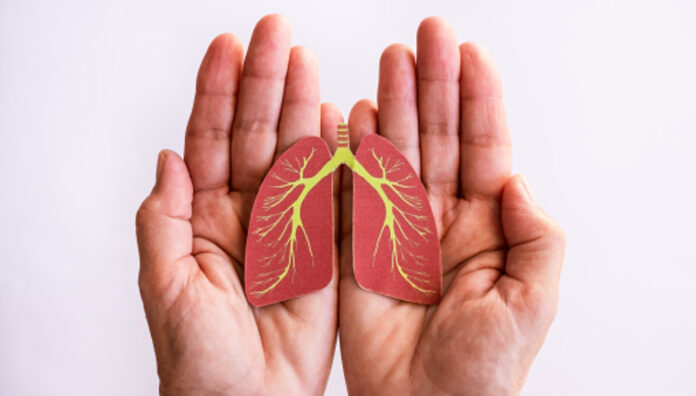Emerging evidence is pointing to the benefits of ‘novel’ antihyperglycaemics on lung function in COPD patients.
Exacerbations or ‘flare-ups’ of chronic obstructive pulmonary disease (COPD) are an ‘acute worsening of symptoms, beyond normal day-to-day variations’.1 This can include ‘increased dyspnoea (shortness of breath), reduced exercise tolerance, tachypnoea (abnormally rapid breathing), increased cough frequency, increased sputum volume or purulence, fever, or right heart failure manifesting as ankle oedema.’1 COPD exacerbations have significant morbidity and mortality for the patient, and are a major source of avoidable hospitalisations in Australia.1,2
Reducing exacerbations is one of the primary goals of COPD management.1,2 All patients should have a written COPD action plan developed with their GP or specialist which outlines how to manage the flare-up early to help prevent hospital admission and COPD progression.1-3 Most COPD exacerbations can be managed by patients in the community by using short-acting bronchodilators – for example, short-acting beta-agonists (salbutamol, terbutaline)– and/or short-acting muscarinic antagonists (ipratropium). Short courses of oral corticosteroids are used when exacerbations do not respond sufficiently to the inhaled bronchodilators, and antibacterials are beneficial when there are signs of clinical infection. 1,2 Oxygen may also be used in patients with hypoxaemia, and ventilatory support is recommended for COPD exacerbations associated with hypercapnic respiratory failure and acidosis despite optimal therapy including oxygen.
Given the significant burden of disease and healthcare costs associated with COPD and its exacerbations, increasing treatment options in this space is always welcome. There is emerging evidence of beneficial effects on lung function for one group of medicines: the ‘novel’ antihyperglycaemics – for example, glucagon-like peptidase 1 (GLP-1) receptor agonists, dipeptidyl peptidase-4 (DPP-4) inhibitors, and sodium-glucose co-transporter-2 (SGLT-2) inhibitors.4 These medicines are also of interest given the increased risk of COPD morbidity and mortality in people with type 2 diabetes.4
A recent population-based cohort study looked at the impact of these antihyperglycaemics on the risk of COPD exacerbations in people with type 2 diabetes.4 Sulfonylureas were used as the active comparator as they are started at a similar time in type 2 diabetes management as the GLP-1 agonists/DPP-4 inhibitors, SGLT-2 inhibitors (that is, add-on therapy to metformin), and reportedly have not been previously associated with increased COPD exacerbations.4 Data were extracted from national, primary and secondary care datasets in the United Kingdom (UK) from when the medicines were introduced to market in the UK, and adjusted for potential confounders in the modelling analysis: GLP-1 receptor agonists (n = 1252) vs sulfonylureas (n = 14,259) from 1 Jan 2007–31 Dec 2019; DPP-4 inhibitors (n = 8,731) vs sulfonylureas (n = 18204) from 1 Jan 2007–31 Dec 2019; and SGLT-2 inhibitors (n = 2,956) vs sulfonylureas (n = 10,841) from 1 Jan 2013–30 Dec 2019.4
The authors found the GLP-1 receptor agonist cohort to be associated with a 30% lower risk of severe (3.5 v 5.0 events per 100 person years; hazard ratio 0.70, 95% confidence interval 0.49–0.99), and 37% lower risk of moderate COPD exacerbations.4 The DPP-4 inhibitor cohort did not experience a consistently lower risk in these outcomes, while the SGLT-2 inhibitor cohort saw a reduced risk of severe but not moderate exacerbations.4
The benefits of the GLP-1 agonists are reportedly consistent with previous work which found reduced inflammatory and airway hyperresponsiveness, and improvements in surrogate markers for lung function.
The authors propose this to be due to its systemic anti-inflammatory effects and impact upon the underlying risk factors for COPD and associated state of chronic inflammation (for example, smoking, obesity, hypertension), and weight loss effects on abdominal obesity and associated impact on lung function.4
Similarly, the benefit from the DPP-4 inhibitors may be due to a similar mechanism of raised endogenous GLP-1, but at a much lower level compared to the more potent GLP-1 agonists.4 In terms of the SLGT-2 inhibitors, it is hypothesised the excretion of glucose in urine reduces glucose available for metabolism, thereby reducing endogenous carbon dioxide, which may be useful for people with severe COPD who have difficulty removing carbon dioxide. Additionally, previous work has also reportedly found SLGT-2 inhibitors reduce the risk of pneumonia, but the mechanisms for these benefits are unclear.4
Accordingly, much more work is needed to better understand the mechanism and clinical utility of these oral antihyperglycaemics in COPD, and for preventing exacerbations (for example, confirmatory randomised controlled trials with the ability to account for considerations such as adherence to medicines, residual confounders, and for longer time periods are warranted).
References
- Respiratory Expert Group. Therapeutic guidelines: Chronic obstructive pulmonary disease (COPD) exacerbations. Melbourne: Therapeutic Guidelines Limited; 2022.
- Lung Foundation Australia. X-Manage Exacerbations Milton (QLD): Lung Foundation Australia; 2022. At: https://copdx.org.au/copd-x-plan/x-manage-exacerbations/
- Lung Foundation Australia. COPD Action Plan Milton (QLD): Lung Foundation Australia; 2023 [At: https://lungfoundation.com.au/resources/copd-action-plan/
- Pradhan R, Lu S, Yin H, et al. Novel antihyperglycaemic drugs and prevention of chronic obstructive pulmonary disease exacerbations among patients with type 2 diabetes: population based cohort study. BMJ 2022;379:e071380. At: www.bmj.com/content/379/bmj-2022-071380
Our authors
ASSOCIATE PROFESSOR ESTHER LAU BPharm (Hons), PhD, GCResComm, GradCertAcadPrac, SFHEA, AFHEA (Indigenous), MPS is Acting HEad of Discipline (Pharmacy) at the Queensland University of Technology (QUT).
PROFESSOR LISA NISSEN BPharm, PhD, FPS, FHKAPh, FSHP is HERA Program Director – Health Workforce Optimisation, Centre for the Business and Economics of Health, University of Queensland.




 Professor Margie Danchin[/caption]
Professor Margie Danchin[/caption]

 Dr Peter Tenni[/caption]
Dr Peter Tenni[/caption]
 How should we deprescribe gabapentinoids, according to the Maudsley Deprescribing Guidelines[/caption]
How should we deprescribe gabapentinoids, according to the Maudsley Deprescribing Guidelines[/caption]








